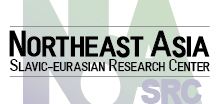On Saturday 11 November the Tsushima City Kōryū Centre hosted the JIBSN Borderlands Research Network Japan Tsushima Seminar. The title of the seminar – ‘The Changing Border/Borderlands: tourism and the population problem’ – proved popular and over 50 people attended. In their introductory remarks, several speakers referred to borders not as the ‘end’ of Japan but as the country’s ‘gateway’.
The first session focused on the development of border tourism in Rebun, Wakkanai, Gotō, Taketomi and Tsushima. Some of the most successful measures to develop tourism included building relations with nearby towns and cities on the other side of the border. Wakkanai looked to Sakhalin and Gotō turned to Cheju to encourage tourists to go to and fro across the border and boost the local economy. The seminar’s relaxed atmosphere encouraged the exchange of ideas between the ‘old hands’ at border tourism and the ‘newcomers’. For example, Rebun joined JIBSN this year and was keen to hear from the others about how they have made the border work for them in their tourism planning. Several of the speakers used the idea of the gateway to suggest that tourists do not always have to ‘pass through’ for border tourism to occur. For many Japanese tourists going to the borderland is the purpose of their trip rather than ‘border crossing’.
The different kinds of border tourism indicated some of the flexibility in local government thinking in how to attract more visitors. Such flexibility is vital for tackling the problem of Japan’s declining population, as the speakers in the second session explained. The aging of the population is also a problem that confronts local governments across Japan. Nevertheless, there are specific problems for border regions. Often, in the recent past, people have been able to move back and forth across the border more easily, helping to sustain the local economy. The loss of such freedom of movement has, in many cases, reduced the number of jobs for local people and forced many of the young to move elsewhere in search of work. The message of the second session was that considering population policy as it applies to the borderlands is more likely to provide effective solutions.
The closing discussion provided an opportunity for all of the participants to consider some of the fundamental changes in Japanese society that are likely to become increasingly necessary over the next few decades. One is encouraging more women to participate in local government politics as a way of building strong communities. Another is rethinking what a ‘Japanese identity’ means at a time when greater immigration seems more likely.

 Eurasia Unit for Border Research (Japan)
Eurasia Unit for Border Research (Japan)




